|
|
- Behavioral Physiology and Neurogenetics of Insects
In the strenuous efforts of preventing the destruction of crops by insects, chemical control serves as a main weapon. However, this approach also has led to many serious problems both in the contamination of the environment with the pesticides and the development of resistance to insecticides in insect populations. So much so that, there is an urgent need in developing new techniques for pest control. Through the understanding of how insects recognize particular chemical cues, we are able to develop novel methods to control insects by disrupting the ability of insects to find their host plants or mates.
Our researches focus on insect olfaction and gustation. Taking the insect olfaction system as an example, olfactory sensory neurons (OSNs) are usually confined within multiporous basiconic or trichoid sensilla located on the antennae and maxillary palps. There are two main components in sensilla: (1) odorant-binding proteins (OBPs) including a subclass named PBPs (pheromone-binding proteins) that are necessary to bind odorants and ferry them across the hydrophobic sensillum lymph to the proximity of receptors; (2) odorant receptors (ORs) which are believed to interact with the odorants and serve as the major determinant for the specificity of a given OSNs. OSNs from insect sensilla project to the antennal lobe of the deuterocerebrum where they terminate in glomeruli. Generally, one OSN has one type of olfactory receptors, and one glomerulus is innervated with one type of OSN although there are some exceptions. Thus, the pattern of activity in the antennal lobe reflects the various dimensions, both qualitatively and quantitatively, of the chemical environment surrounding the insects. A further set of fibers, called projection neurons, relay the olfactory information up to the mushroom bodies and the lateral horns located in the protocerebum. Insects use this complex machinery to discriminate between very closely related chemical structures as well as between different mixtures of the same components through sensing a wide range of chemical signals including pheromones and plant volatiles.
The ongoing projects in the lab address how insects navigate such a complex milieu to locate the potential mates and appropriate host plants by advancing the understanding of the role of the major chemosensory proteins in olfactory and taste recognition. One system developed for such a study involves two closely related species of moths, Helicoverpa armigera and H. assulta. The two species share some host plants but have very different host plant ranges: H. armigera is a typical generalist whereas H. assulta a specialist. They also use the same two components of the sex pheromone, (Z)-11-hexadecenal (Z11-16: Ald) and (Z)-9-hexadecenal (Z9-16: Ald) but in reversed ratios, 100:2.5 and 6:100, respectively. Another system we embark on is specialist herbivorous insects on brassicaceous plants, in which glucosinolates represent classical plant secondary compounds mediating insect-plant interactions. When plants are injured, glucosinolates can be converted to the toxic isothiocyanates by the enzyme myrosinase, which is stored in specialized plant cells. The specialists such as the diamondback moth and the cabbage butterfly own specific sensory neurons responding to these chemicals, but the receptors tuned to glucosinolates and isothiocyanates are still unclear.
Current researches are being developed with the following emphases:
- By the use of electrophysiological techniques such as single cell recording, tip recording, GC-EAD and mass spectrometry for chemical identification, we characterize the OSNs and gustatory sensory neurons (GRNs) responding to phytochemicals and pheromone components, and classify them into distinct types according to their molecular receptive ranges. We are also identifying olfactory receptor and gustatory receptor genes by using the computer algorithm to search the insect genome databases, transcriptome analysis, and degenerate RT-PCR and RACE.
- We express olfactory receptors and gustatory receptors in Xenopus oocytes and Drosophila mutants, and analyze their functions by using two electrode voltage clamping and single sensillum recording, respectively. We also use in situ hybridization to localize their expressions in chemosensory sensilla.
- Using optical imaging, neuron labeling, and intracellular recording, we map out the associations between olfactory receptors, OSNs, and antennal lobe glomeruli. We also characterize the antennal lobe morphological atlas and document olfactory response patterns across the antennal lobe glomeruli to stimuli and their combination.
- With next-generation sequencing and CRISPR-Cas9 genome editing, we in-depth explore the molecular basis of chemical cues-directed insect behaviours.
Recent Progress
(#authors contributed equally;*corresponding author)
|

|
Plant-Insect Interactions |
|
Chen-Zhu Wang, Yong-Gen Lou (editors) |
|
Science Press, Beijing,2023, 538pp. |
|
Green plants and insects are the two main taxa in the living system of the earth. Green plants are the primary producers of the whole living system and have the largest biomass. Insects have the highest species diversity and play an irreplaceable role in maintaining the stability of the entire global ecosystem. The number of species of phytophagous insects alone exceeds the number of plant species. The study of plant-insect interactions is overwhelmingly interesting and important for three reasons: firstly, the mechanisms and laws underlying the relationships between insects and plants have not been revealed to a large extent; secondly, it is an important demand of agriculture to reduce crop damages caused by insect pests and enhance crop resistance to them; thirdly, there are 87 major crops in the world that depend on pollination by insects and other animals.
The first research paper on plant-insect interactions was published in 1910, but the exponential increase in research papers began after 1970. In 1987, the book "Insect-Plant Relationships: On the Interactions and Evolution of Insects and Plants" by Junde Qin, Academician and Distinguished Professor of Chinese Academy of Sciences was published. It comprehensively introduced the diverse relationships between insects and plants and explained the basic issues and research progresses in the field. For the domestic researches in this field were still in its infancy at that time, most of the literature cited in the book came from abroad. The book has greatly promoted the insect-plant researches in China. Since then, the more and more research teams were engaged in plant-insect interactions in China, and made remarkable contributions to the field.
Following the landmark work of Junde Qin, the new book “Plant-Insect Interactions” edited by Chen-Zhu Wang and Yong-Gen Lou systematically summarizes the research progresses in recent years, especially the main contributions of Chinese scientists in this field. The book is composed of 16 chapters in 4 parts. The first part is on the relationships between insects and plants and their evolution, including 3 chapters: Chapter 1 reviews the research history and prospects of the plant-insect relations, Chapter 2 describes the natural history of the interactions between insects and plants, and Chapter 3 introduces the relationships between pollinators and plants. The second part focuses on plant chemical defense against insects, including 5 chapters: Chapter 4, Chapter 5, and Chapter 6 expound the chemical defense of tomato, rice and corn to insects, respectively; Chapters 7 and Chapter 8 address the biosynthesis of sesquiterpene involved in cotton resistance to insects and the effects of silicon on plant resistance to insects, respectively. The third part focuses on host-plant selection and adaptation by phytophagous insects, including 4 chapters: Chapter 9, Chapter 10, and Chapter 11 review host-plant selection and adaptation of tobacco whiteflies, cotton bollworms, and leaf miners, respectively; Chapter 12 elaborates the resistance of the cotton bollworm to transgenic Bt plants. The fourth part is about multi-trophic interactions, and includes four chapters: Chapter 13 reviews the interactions mediated by glucosinolates among cruciferous plants, insect pests and their natural enemies; Chapter 14 presents complex interactions among host pines and fungi vectored by invasive bark beetles; and Chapter 15 and Chapter 16 deal with the effects of genetically modified resistant crops and global climate change on the ecological relationships among crops, pests and natural enemies, respectively. The authors of each chapter are all from well-known teams engaged in relevant researches. |
|
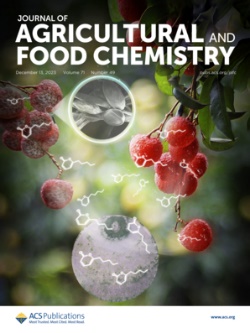
|
Discovery of insect attractants based on the functional analyses of female-biased odorant receptors and their orthologs in two closely related species |
|
Bao-Tong Mo, Hao Guo, Guo-Cheng Li, Lin-Lin Cao, Xin-Lin Gong, Ling-Qiao Huang, Chen-Zhu Wang* |
|
Journal of Agricultural and Food Chemistry 2023, doi:10.1021/acs.jafc.3c05368 |
|
Olfaction plays an instrumental role in host plant selection by phytophagous insects.Helicoverpa assultaandHelicoverpa armigeraare two closely related moth species with different host plant ranges. In this study, we first comparatively analyzed the function of 11 female-biased odorant receptors (ORs) and their orthologs in the two species by theDrosophilaT1 neuron expression system and then examined the electroantennography responses of the two species to the most effective OR ligands. Behavioral assays using a Y-tube olfactometer indicate that guaiene, the primary ligand of HassOR21–2 and HarmOR21–2, only attracts the females, while benzyl acetone, the main ligand of HassOR35 and HarmOR35, attracts both sexes of the two species. Oviposition preference experiments further confirm that guaiene and benzyl acetone are potent oviposition attractants for the mated females of both species. These findings deepen our understanding of the olfactory coding mechanisms of host plant selection in herbivorous insects and provide valuable attractants for managing pest populations. |
|
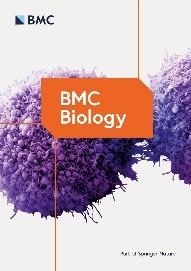
|
Mutagenesis of the odorant receptor co-receptor (Orco) reveals severe olfactory defects in the crop pest mothHelicoverpa armigera |
|
Xiao-Bin Fan, Bao-Tong Mo, Guo-Cheng Li, Ling-Qiao Huang, Hao Guo, Xin-Lin Gong, Chen-Zhu Wang* |
|
BMC Biology 2022, 20:214 |
|
Odorant receptors (ORs) as odorant-gated ion channels play a crucial role in insect olfaction. They are formed by aheteromultimeric complexof the odorant receptor co-receptor (Orco) and a ligand-selective Or. Other types of olfactory receptor proteins, such as ionotropic receptors (IRs) and some gustatory receptors (GRs), are also involved in the olfactory system of insects. Orco as an obligatory subunit of ORs is highly conserved, providing an opportunity to systematically evaluate ORs-dependent olfactory responses. Herein, we successfully established a homozygous mutant (Orco-/-) ofHelicoverpa armigera, a notorious crop pest,using the CRISPR/Cas9 gene editing technique. We then compared the olfactory response characteristics of wild type (WT) andOrco-/-adults and larvae.Orco-/-males were infertile, whileOrco-/-females were fertile. The lifespan ofOrco-/-females was longer than that of WT females. The expressions of mostOrs, Irs,and other olfaction-related genesin adult antennae ofOrco-/-moths were not obviously affected, but some of them were up- or down-regulated. In addition, there was no change in the neuro-anatomical phenotype ofOrco-/-moths at the level of the antennal lobe (including the macroglomerular complex region of the male). Using EAG and SSR techniques, we discovered that electrophysiological responses ofOrco-/-moths to sex pheromone components and many host plant odorants were absent. The upwind flight behaviors toward sex pheromones ofOrco-/-males were severely reduced in a wind tunnel experiment. The oviposition selectivity ofOrco-/-females to the host plant (green pepper) was completely disappeared, and the chemotaxis toward green pepper was also lost inOrco-/-larvae. Our study indicates thatORs-mediated olfaction is essential forpheromone communication, oviposition selection, and larval chemotaxis ofH. armigera,suggesting a strategy in which mate searching and host-seeking behaviors of moth pests could be disrupted by inhibiting or silencingOrcoexpression. |
|
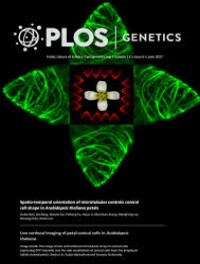
|
Functional analysis of a bitter gustatory receptor highly expressed in the larval maxillary galea ofHelicoverpa armigera |
|
Yan Chen#, Pei-Chao Wang#, Shuai-Shuai Zhang, Jun Yang, Guo-Cheng Li, Ling-Qiao Huang, Chen-Zhu Wang* |
|
PLoS Genetics 2022, 18: e1010455 |
|
Many plant secondary substances are feeding deterrents for insects and play a key role in the selection of host plants. The taste sensilla of phytophagous insects contain gustatory sensory neurons sensitive to deterrents but the molecular basis of deterrent chemoreception remains unknown. We investigated the function of Gr180, the most highly expressed bitter gustatory receptor in the maxillary galea ofHelicoverpa armigeralarvae. Functional analyses using theXenopusoocyte expression system and two-electrode voltage clamp revealed that the oocytes expressing Gr180 responded to coumarin. Tip recording results showed that the medial sensilla styloconica of the maxilla of fifth instar larvae exhibited electrophysiological responses to coumarin. Two-choice feeding bioassays confirmed that coumarin inhibited larval feeding. A homozygous mutant strain ofH. armigerawith truncated Gr180 proteins (Gr180-/-) was established using the CRISPR-Cas9 system. The responses of the medial sensilla styloconica in Gr180-/- to coumarin were almost abolished, and the responses to sinigrin and strychnine were also significantly decreased. Knockout of Gr180 alleviated the feeding deterrent effects of coumarin, sinigrin, and strychnine. Thus, we conclude that Gr180 is a receptor responding to coumarin, and also participates in sensing sinigrin and strychnine. These results enhance our understanding of the gustatory sensing mechanisms of phytophagous insects to deterrents. |
|
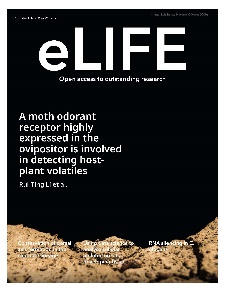
|
A moth odorant receptor highly expressed in the ovipositor is involved in detecting host-plant volatiles |
|
Rui-Ting Li, Ling-Qiao Huang, Jun-Feng Dong, Chen-Zhu Wang* |
|
eLife 2020, 9:e53706 |
|
Antennae are often considered to be the nostrils of insects. Here, we sequenced the transcriptome of the pheromone gland-ovipositor complex ofHelicoverpa assultaand discovered that an odorant receptor (OR) gene, HassOR31, had much higher expression in the ovipositor than in antennae or other tissues. To determine whether the ovipositor was involved in odorant detection, we co-expressed HassOR31 and its co-receptor, HassORco, in aXenopusoocyte model system, and demonstrated that the OR was responsive to 12 plant odorants, especially Z-3-hexenyl butyrate. These odorants elicited electrophysiological responses of some sensilla in the ovipositor, and HassOR31 and HassORco were co-expressed within ovipositor sensilla. Two oviposition preference experiments showed that female moths lacking antennae still preferentially selected oviposition sites containing plant volatiles. We suggest that the expression of HassOR31 in the ovipositor ofH. assultahelps females to determine precise egg-laying sites in host plants. |
|
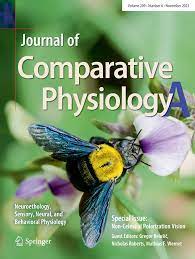
|
Chemosensory detection of glucosinolates as token stimuli for specialist insects on brassicaceous plants: discovery and impact |
|
Chen-Zhu Wang*, Joop J. A. van Loon* |
|
Journal of Comparative Physiology A 2023, doi:10.1007/s00359-023-01684-0 |
|
In this paper, we take a historical perspective by going back to Verschaffelt’s landmark study published in 1910, in which he found that glucosinolates were used as token stimuli by larvae ofPierisbutterflies, specialist feeders on plants in the family Brassicaceae. This classic discovery provided key evidence for Fraenkel (Science 129:1466–1470, 1959) to elaborate on the function of secondary plant substances and for Ehrlich and Raven (Evolution 18:586–608, 1964) to put forward the hypothesis of insect–plant coevolution. The discovery by Schoonhoven (Kon Nederl Akad Wetensch Amsterdam Proc Ser C70:556–568, 1967) of taste neurons highly sensitive to glucosinolates inPieris brassicaewas an important milestone in elucidating the chemosensory basis of host-plant specialization. The molecular basis of glucosinolate sensitivity was elucidated recently (Yang et al., PLoS Genet 17, 2021) paving the way to unravel the evolution of gustatory receptors tuned to glucosinolates that are crucial for host-plant selection ofPierisbutterflies. We propose a hypothetical model for the evolution of labeled-line neurons tuned to token stimuli. |
|
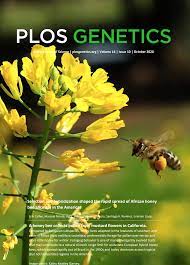
|
Identification of a gustatory receptor tuned to sinigrin in the cabbage butterflyPieris rapae |
|
Jun Yang, Hao Guo, Nan-Ji Jiang, Rui Tang, Guo-Cheng Li, Ling-Qiao Huang, Joop J. A. van Loon, Chen-Zhu Wang* |
|
PLoS Genetics 2021, 17: e1009527 |
|
Glucosinolates are token stimuli in host selection of many crucifer specialist insects, but the underlying molecular basis for host selection in these insects remains enigmatic. Using a combination of behavioral, electrophysiological, and molecular methods, we investigate glucosinolate receptors in the cabbage butterflyPieris rapae. Sinigrin, as a potent feeding stimulant, elicited activity in larval maxillary lateral sensilla styloconica, as well as in adult medial tarsal sensilla. TwoP. rapaegustatory receptor genesPrapGr28andPrapGr15were identified with high expression in female tarsi, and the subsequent functional analyses showed thatXenopusoocytes only expressing PrapGr28 had specific responses to sinigrin; when ectopically expressed inDrosophilasugar sensing neurons, PrapGr28 conferred sinigrin sensitivity to these neurons. RNA interference experiments further showed that knockdown of PrapGr28 reduced the sensitivity of adult medial tarsal sensilla to sinigrin. Taken together, we conclude that PrapGr28 is a gustatory receptor tuned to sinigrin inP. rapae, which paves the way for revealing the molecular basis of the relationships between crucifer plants and their specialist insects. |
|
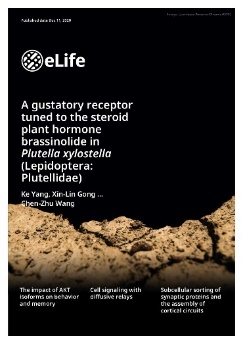
|
A gustatory receptor tuned to the steroid plant hormone brassinolide inPlutella xylostella(Lepidoptera: Plutellidae) |
|
Ke Yang, Xin-Lin Gong, Guo-Cheng Li, Ling-Qiao Huang, Chao Ning, Chen-Zhu Wang* |
|
eLife 2020, 9: e64114 |
|
Feeding and oviposition deterrents help phytophagous insects to identify host plants. The taste organs of phytophagous insects contain bitter gustatory receptors (GRs). To explore their function, the GRs inPlutella xylostellawere analyzed. Through RNA sequencing and qPCR, we detected abundant PxylGr34 transcripts in the larval head and adult antennae. Functional analyses using theXenopusoocyte expression system and 24 diverse phytochemicals showed that PxylGr34 is tuned to the canonical plant hormones brassinolide (BL) and 24-epibrassinolide (EBL). Electrophysiological analyses revealed that the medial sensilla styloconica of 4th instar larvae are responsive to BL and EBL. Dual-choice bioassays demonstrated that BL inhibits larval feeding and female oviposition. Knock-down of PxylGr34 by RNAi attenuates the taste responses to BL, and abolishes BL-induced feeding inhibition. These results increase our understanding of how herbivorous insects detect compounds that deter feeding and oviposition, and may be useful for designing plant hormone-based pest management strategies. |
|
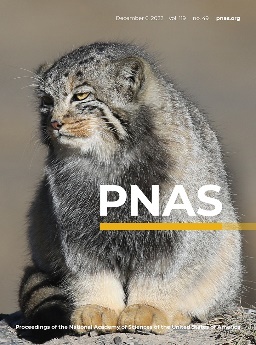
|
Sex pheromone communication in an insect parasitoid,Campoletis chlorideaeUchida |
|
Hao Guo#, Bao-Tong Mo#, Guo-Cheng Li, Zi-Lin Li, Ling-Qiao Huang, Ya-Lan Sun, Jun-Feng Dong, Dean P. Smith, Chen-Zhu Wang* |
|
Proceedings of National Academy of Sciences of the United States of America 2022,119: e2215442119 |
|
Sex pheromones are pivotal for insect reproduction. However, the mechanism of sex pheromone communication remains enigmatic in hymenopteran parasitoids. Here we have identified the sex pheromone and elucidated the olfactory basis of sex pheromone communication inCampoletis chlorideae(Ichneumonidae), a solitary larval endoparasitoid of over 30 lepidopteran pests. Using coupled gas chromatography-electroantennogram detection, we identified two female-derived pheromone components, tetradecanal (14:Ald) and 2-heptadecanone (2-Hep) (1:4.6), eliciting strong antennal responses from males but weak responses from females. We observed that males but not females were attracted to both single components and the blend. The hexane-washed female cadavers failed to arouse males, and replenishing 14:Ald and 2-Hep could partially restore the sexual attraction of males. We further expressed sixC. chlorideaemale-biased odorant receptors inDrosophilaT1 neurons and found that CchlOR18 and CchlOR47 were selectively tuned to 14:Ald and 2-Hep, respectively. To verify the biological significance of this data, we knocked down CchlOR18 and CchlOR47 individually or together in vivo and show that the attraction ofC. chlorideaeto their respective ligands was abolished. Moreover, the parasitoids defective in either of the receptors were less likely to court and copulate. Finally, we show that the sex pheromone and (Z)-jasmone, a potent female attractant, can synergistically affect behaviors of virgin males and virgin females and ultimately increase the parasitic efficiency ofC. chlorideae. Our study provides new insights into the molecular mechanism of sex pheromone communication inC. chlorideaethat may permit manipulation of parasitoid behavior for pest control. |
|
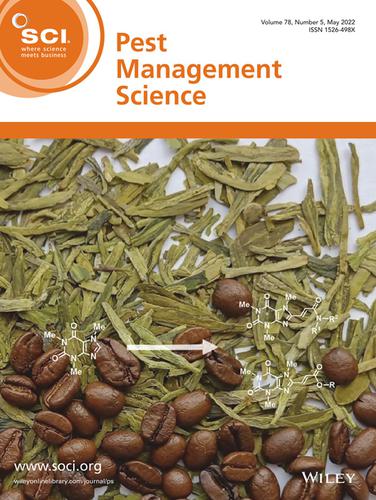
|
Functional analysis of pheromone receptor repertoire in the fall armyworm,Spodoptera frugiperda |
|
Hao Guo, Xin-Lin Gong, Guo-Cheng Li, Bao-Tong Mo, Nan-Ji Jiang, Ling-Qiao Huang, Chen-Zhu Wang* |
|
Pest Management Science 2022, 78: 2052-2064 |
|
The fall armyworm,Spodoptera frugiperda(J. E. Smith), is a polyphagous moth species that is spreading all around the globe. It uses (Z)-9-tetradecenyl acetate (Z9-14:Ac) and (Z)-7-dodecenyl acetate (Z7-12:Ac) (100:3.9) as essential sex pheromone components. However, our understanding of the molecular basis of pheromone detection ofS. frugiperdais still incomplete. Herein, we identified six PRs, i.e. SfruOR6, 11, 13, 16, 56, and 62, by transcriptome sequencing. Subsequently, we heterologously expressed them in Drosophila OR67d neurons and determined their response spectra with a large panel of sex pheromones and analogs. Among them, SfruOR13-expressing neurons strongly respond to the major sex pheromone component Z9-14:Ac, but also comparably to (Z,E)-9,12-tetradecadienyl acetate (Z9,E12-14:Ac) and weakly to (Z)-9-dodecenyl acetate (Z9-12:Ac). Both SfruOR56 and SfruOR62 are specifically tuned to the minor sex pheromone component Z7-12:Ac with varying intensities and sensitivities. In addition, SfruOR6 is activated only by Z9,E12-14:Ac, and SfruOR16 by both (Z)-9-tetradecenol (Z9-14:OH) and (Z)-9-tetradecenal (Z9-14:Ald). However, the OR67d neurons expressing SfruOR11 remain silent to all compounds tested, a phenomenon commonly found in the OR11 clade of Noctuidae species. Next, using single sensillum recording, we characterized four sensilla types on the antennae of males, namely A, B, C and D types that are tuned to the ligands of PRs, thereby confirming thatS. frugiperdauses both SfruOR56 and SfruOR62 to detect Z7-12:Ac. Finally, using wind tunnel assay, we demonstrate that both Z9,E12-14:Ac and Z9-14:OH act as antagonists to the sex pheromone. We have deorphanized five PRs and characterized four types of sensilla responsible for the detection of pheromone compounds, providing insights into the peripheral encoding of sex pheromones inS. frugiperda. |
|
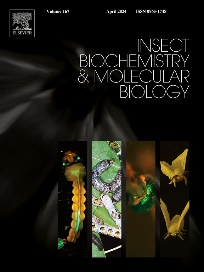
|
Comparison of functions of pheromone receptor repertoires inHelicoverpa armigeraandHelicoverpa assultausing aDrosophilaexpression system |
|
Hao Guo, Ling-Qiao Huang, Xin-Lin Gong, Chen-Zhu Wang* |
|
Insect Biochemistry and Molecular Biology 2022, 141:103702 |
|
Helicoverpa armigeraandH. assultaare sympatric closely related species sharing two sex pheromone components, (Z)-11-hexadecenal (Z11-16:Ald) and (Z)-9-hexadecenal (Z9-16:Ald) but in opposite ratios, 97:3 and 3:97 respectively. This feature makes them a feasible model for studying the evolution of pheromone coding mechanisms of lepidopteran insects. Despite a decade-long study to deorphanize the pheromone receptor (PR) repertoires of the two species, the comparison of the function of all PR orthologs between the two species is incomplete. Moreover, the ligands of OR14 and OR15 have so far not been found, likely due to the missing of the active ligand(s) in the compound panel and/or incompatibility of heterologous expression systems used. In the present study, we expressed the PR repertoires of bothHelicoverpaspecies inDrosophilaT1 neurons to comparatively study the function of PRs. Among those PRs, OR13, OR6, and OR14 of both species are functionally conserved and narrowly tuned, and the T1 neurons expressing each of them respond to Z11-16:Ald, (Z)-9-hexadecenol (Z9-16:OH), and (Z)-11-hexadecenyl acetate (Z11-16:Ac), respectively. While HarmOR16-expressing neurons respond strongly to (Z)-9-tetradecenal (Z9-14:Ald) and (Z)-11-hexadecenol (Z11-16:OH), the neurons expressing HassOR16 mainly respond to Z9-14:Ald and also weakly respond to (Z)-9-tetradecenol (Z9-14:OH). Moreover, HarmOR14b-expressing neurons are activated by Z9-14:Ald, whereas HassOR14b-expressing neurons are sensitive to Z9-16:Ald, Z9-14:Ald, and (Z)-9-hexadecenol (Z9-16:OH). In addition, HarmOR15-expressing neurons are selectively responsive to Z9-14:Ald. However, theDrosophilaT1 neurons expressing either HarmOR11 or HassOR11 are silent to all of the compounds tested. In summary, except for OR11, we have deorphanized all the PRs of these twoHelicoverpaspecies using aDrosophilaexpression system and a large panel of pheromone compounds, thereby providing a valuable reference for parsing the code of peripheral coding of pheromones. |
|

|
Two single-point mutations shift the ligand selectivity of a pheromone receptor between two closely related moth |
|
Ke Yang, Ling-Qiao Huang, Chao Ning, Chen-Zhu Wang |
|
eLife, 2017, 6: e29100 |
|
Male moths possess highly sensitive and selective olfactory systems that detect sex pheromones produced by their females. Pheromone receptors (PRs) play a key role in this process. The PR HassOr14b is found to be tuned to (Z)-9-hexadecenal, the major sex-pheromone component, inHelicoverpa assulta. HassOr14b is co-localized with HassOr6 or HassOr16 in two olfactory sensory neurons within the same sensilla. As HarmOr14b, the ortholog of HassOr14b in the closely related speciesHelicoverpa armigera, is tuned to another chemical (Z)-9-tetradecenal, we study the amino acid residues that determine their ligand selectivity. Two amino acids located in the intracellular domains F232I and T355I together determine the functional difference between the two orthologs. We conclude that species-specific changes in the tuning specificity of the PRs in the twoHelicoverpamoth species could be achieved with just a few amino acid substitutions, which provides new insights into the evolution of closely related moth species. |
- Physiological Ecology and Behavioral Neuroendocrine of Rodents
Outbreaks of rodents seriously endanger agricultural and animal husbandry and human health. In the study of the important harm rodents in our country, combining the laboratory and field research and using the technical means of physiology, behavioral neuroendocrinology, molecular biology, neurobiology and microecology, Dr. Xue-Ying Zhang focuses on the following scientific questions: (1) how do the gut microbiota interact with the host to regulate the metabolism and thermogenesis of the rodents? (2) what is the neuroendocrine basis of seasonal reproduction? (3) how does the early environmental stress program the physiological and behavioral phenotypes of offspring? Through the answer to these questions, it reveals the adaptation mechanism of the rodents to the environments, and provides the theoretical basis for the ecological regulation of the rodent populations.
Recent Progress
(#authors contributed equally;*corresponding author)
|
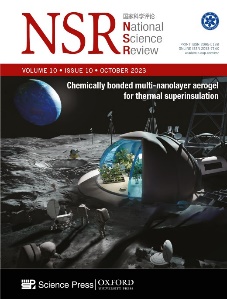
|
Phylogenetic signal in gut microbial community rather than in rodent metabolic traits |
|
Xue-Ying Zhang#*,Saeid Khakisahneh#,Wei Liu,Xinyi Zhang,Weiwei Zhai,Jilong Cheng,John Speakman*,De-Hua Wang* |
|
National Science Review 2023, 10: nwad209 |
|
Host phylogeny and environments have all been implicated in shaping the gut microbiota and host metabolic traits of mammals. However, few studies have evaluated phylogeny-associated microbial assembly and host metabolic plasticity concurrently and their relationships on both short-term and evolutionary timescales. We reported that the branching order of gut microbial dendrogram was nearly congruent with phylogenetic relationships of 7 rodent species, and this pattern of phylosymbiosis was intact after diverse laboratory manipulations. Laboratory rearing, and diet or air temperature (Ta) acclimation induced alterations in gut microbial communities, but could not override host phylogeny in shaping microbial community assembly. Simulative heat wave reduced core microbiota diversity by 26% in these species, and led to an unmatched relationship between the microbiota and host metabolic phenotypes in desert species. Moreover, the similarity of metabolic traits across species at differentTas was not correlated with phylogenetic distance. These data demonstrated that the gut microbial assembly showed strong concordance with host phylogeny and may be shaped by environmental variables, whereas host metabolic traits did not seem to be linked with phylogeny. |
|
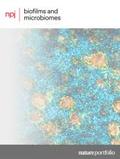
|
Ginseng extracts improve circadian clock gene expression and reduce inflammation directly and indirectly through gut microbiota and PI3K signaling pathway |
|
Xue-Ying Zhang#*,Saeid Khakisahneh#,Song-Yi Han,Eun-Ji Song,Young-Do Nam*,Hojun Kim* |
|
npj Biofilms and Microbiomes 2024, 10: 24. |
|
Despite the potential benefits of herbal medicines for therapeutic application in preventing and treating various metabolic disorders, the mechanisms of action were understood incompletely. Ginseng (Panax ginseng), a commonly employed plant as a dietary supplement, has been reported to play its hot property in increasing body temperature and improving gut health. However, a comprehensive understanding of the mechanisms by which ginseng regulates body temperature and gut health is still incomplete. This paper illustrates that intermittent supplementation with ginseng extracts improved body temperature rhythm and suppressed inflammatory responses in peripheral metabolic organs of propylthiouracil (PTU)-induced hypothermic rats. These effects were associated with changes in gut hormone secretion and the microbiota profile. Thein-vitrostudies in ICE-6 cells indicate that ginseng extracts can not only act directly on the cell to regulate the genes related to circadian clock and inflammation, but also may function through the gut microbiota and their byproducts such as lipopolysaccharide. Furthermore, administration of PI3K inhibitor blocked ginseng or microbiota-induced gene expression related with circadian clock and inflammationin vitro. These findings demonstrate that the hot property of ginseng may be mediated by improving circadian clock and suppressing inflammation directly or indirectly through the gut microbiota and PI3K-AKT signaling pathways. |
|

|
The microbiota-gut-kidney axis mediates host osmoregulation in a small desert mammal |
|
Zahra Nouri#, Xue-Ying Zhang#*, Saeid Khakisahneh, Allan Degen, De-Hua Wang*. |
|
npj Biofilms and Microbiomes 2022, 8: 16. |
|
Regulating sodium and water balances is crucial for survival of small, desert mammals. Studies demonstrate that the gut microbiota and their metabolites are involved in host energy homeostasis, but little is known on the interactions among salt loading, gut microbiota, and osmoregulation. The aim of this study was to fill this gap. Mongolian gerbils (Meriones unguiculatus) were offered drinking water (Con) and either water containing moderate (4%, MS) or high NaCl (8%, HS)ad libitum. Intake of HS reduced α diversity of the microbial community and, at the genus level, reduced the relative abundances ofRikenellaandChristensenellabutincreasedAtopobium. To confirm the function of gut microbiota in host osmoregulation, we transplanted caecal microbiota in HS gerbils. To cope with salt loading, the gerbils concentrated urine, resulting in negative energy balance and systemic inflammation. The HS gerbils increased hypothalamic arginine vasopressin and intestinal and renal aquaporin 2 to support water retention, and reduced intestinal and renal epithelial sodium channel a to promote sodium excretion. However, HS gerbils with caecal microbiota transplant (CMT) from Con donors maintained energy balance and osmoregulation, and had a much reduced systemic inflammation. Further, CMT from Con donors to HS recipients reshaped the gut microbiota, particularly by reducingParabacteroidesdistasonisandPrevotellacopri, and increasingLactobacillusreuteriabundances, with a resulting increase in bacterial metabolites such as butyrate. These findings highlight a vital role of the microbiota-gut-kidney axis in mediating salt-related osmoregulation, allowing small mammals to adapt to high salt loads in a desert habitat. |
|
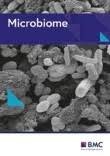
|
Huddling remodels gut microbiota to reduce energy requirements in a small mammal species during cold exposure |
|
Xue-Ying Zhang,Gansukh Sukhchuluun,Ting-Bei Bo,Qing-Sheng Chi,Jun-Jie Yang,Bin Chen,Lei Zhang,De-Hua Wang* |
|
Microbiome 2018, 6:103. |
|
Huddling is highly evolved as a cooperative behavioral strategy for social mammals to maximize their fitness in harsh environments. Huddling behavior can change psychological and physiological responses. The coevolution of mammals with their microbial communities confers fitness benefits to both partners. The gut microbiome is a key regulator of host immune and metabolic functions. We hypothesized that huddling behavior altered energetics and thermoregulation by shaping caecal microbiota in small herbivores. Brandt’s voles (Lasiopodomys brandtii) were maintained in a group (huddling) or as individuals (separated) and were exposed to warm (23 ± 1 °C) and cold (4 ± 1 °C) air temperatures (Ta). Voles exposed to cold Tahad higher energy intake, resting metabolic rate (RMR) and nonshivering thermogenesis (NST) than voles exposed to warm Ta. Huddling voles had lower RMR and NST than separated voles in cold. In addition, huddling voles had a higher surface body temperature (Tsurface), but lower core body temperature (Tcore) than separated voles, suggesting a lower set-point of Tcorein huddling voles. Both cold and huddling induced a marked variation in caecal bacterial composition, which was associated with the lower Tcore. Huddling voles had a higher α and β-diversity, abundance ofLachnospiraceaeandVeillonellaceae,but lower abundance ofCyanobacteria,Tenericutes, TM7,ComamonadaceaeandSinobacteraceaethan separated voles. Huddling or cold resulted in higher concentrations of short-chain fatty acids (SCFAs), particularly acetic acid and butyric acid when compared to their counterparts. Transplantation of caecal microbiota from cold-separated voles but not from cold-huddling voles induced significant increases in energy intake and RMR compared to that from warm-separated voles. These findings demonstrate that the remodeling of gut microbiota, which is associated with a reduction in host Tcore, mediates cold and huddling-induced energy intake and thermoregulation and therefore orchestrates host metabolic and thermal homeostasis. It highlights the coevolutionary mechanism of host huddling and gut microbiota in thermoregulation and energy saving for winter survival in endotherms. |
|
|
|

